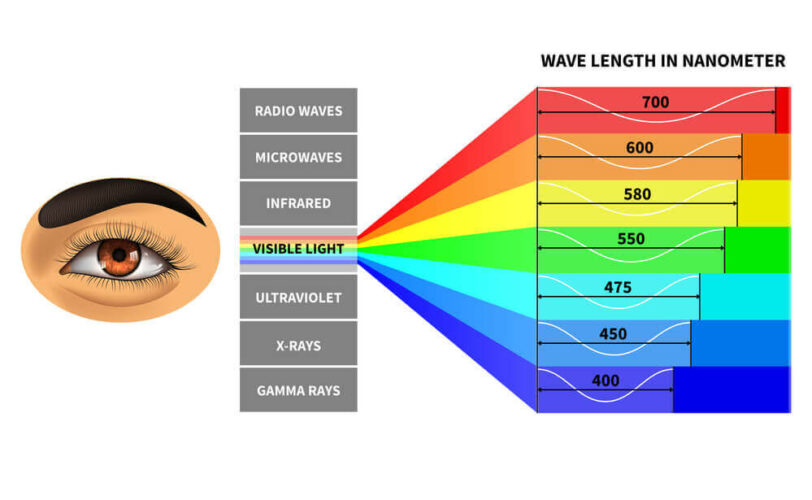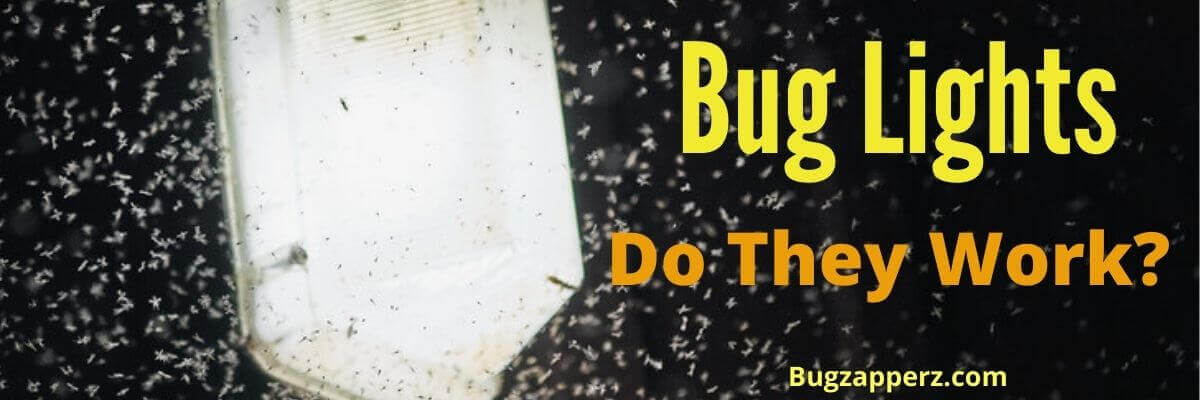As the days get longer and warmer, insects become more of a problem. Some bugs like mosquitoes and gnats carry bacteria and diseases, while others bite or sting the homeowner — which is not fun during summertime! Others, like moths, may simply annoy you as they constantly fly around your outdoor lights.
What can you do to keep these bugs at a distance as you enjoy an evening barbecue or a beer with friends?
Of course, there are traps, zappers, or repellents that you can use to protect yourself and also an easier way to attract fewer bugs to your deck.
Bug lights can help keep these insects at bay as they emit a spectrum that most insects do not favor. They won’t repel the insects, but they will make your lights less attractive. In this post, you will find out why.
I may earn a commission for purchases using links on our site. Learn more.
What is a Bug Light?
A bug light is a light bulb with a yellow coating that attracts fewer insects than an ordinary white light bulb. They may help you avoid the swarm of insects you have flying around your outside lights in the summer.
Don’t think the yellow bug lights will repel or kill insects; they won’t. They are simply less attractive to certain insects.
If you’re attacked by biting insects, you will still need to cover up or use a repellent on your skin or a spatial repellent. Biting insects, such as mosquitoes, are attracted to light and also carbon dioxide, so if you are in the vicinity of an artificial light source, they will sense your presence and try to bite you.
Do Bug Lights Work?
Bulbs sold as bug lights do attract fewer insects than traditional incandescent light bulbs. An LED warm-colored light that gives a yellow or orange-colored light seems the best option.
Certain artificial lights are used in pest control methods. Black, green, or blue lights are used to attract and trap pests and help avoid treatments with insecticides. Using yellow, orange, or red lights will probably attract fewer insects, although it can depend on the species of insects in your yard.
Why Are Insects Attracted to Lights?
There are a few theories about why bugs are attracted to artificial light, although scientists are not entirely sure. The insects attracted to light have a positive phototaxis, such as moths, mosquitoes, grasshoppers, beetles, flies, or stink bugs. Other organisms (cockroaches, silverfish, earthworms) have a negative phototaxis – they move away from light.
Anyway, let’s look at the different theories.
Insects Use light to navigate
This seems to be the most popular theory. Bugs are thought to use UV light from the sun, stars, or moon to navigate. They keep a distant light source at a certain fixed angle, so they go in a straight line and stay oriented in the right direction. A bright source of light can disrupt their navigation and attract them. The confused bug is unable to keep the light at a fixed angle, so it flies into the light or circles around it endlessly.
Protection from predators
Another theory is that your artificial light will offer some protection from predators. When they see the light, they fly towards it as they know there are no obstacles and perhaps no predators waiting to ambush them.
Confuse artificial light with flowers
The last theory is that some insects confuse your outside lights for flowers. This sounds strange, but some flowers emit tiny amounts of UV light. And if you are using bulbs in your outdoor lighting that give off UV light, the bugs think your lights are a flower, and they are under the impression they are going to feed.
Heat and Brightness
Many bulbs (incandescent, halogen, and CFL) produce heat. Insects with thermal receptors, such as mosquitoes, will detect this heat and be attracted to it.
LED lights produce very little heat and so are less attractive to insects.
The brighter the bulb, the greater the distance it will be visible – attracting more insects. Therefore your outdoor lights should produce just enough light for your needs. If you can reduce your bulb from 100W to 60W, this should attract fewer insects and save a little electricity.
Bug bulbs wavelength or color

The human eye can see light (visible light spectrum) from blue/violet light with a wavelength of around 380 nanometers to red light up to 700 nanometers. Insects see light in the wavelength of 300 to 650 nanometers, including the ultraviolet light spectrum.
Scientists think most insects prefer UV light in the cooler blue spectrum (shortwave length) colors and can see these colors very well. For this reason, bug zappers and insect traps use blue or purple light. Insects can see certain colors, but they can’t see other colors, just like our human eye.
Colors with a higher wavelength, such as yellow, orange, or red, are less visible to insects. This is why yellow/orange bug lights or bulbs help attract fewer insects. Red bulbs would attract even fewer insects but give less light for us humans.
Incandescent, CFL, and halogen bulbs emit UV light, attracting numerous flying pests. LEDs emit very little UV and will attract fewer bugs.
What Research Tells Us
One study in the Amazonian rain forest found that LED lamps with an amber filter were less attractive to insects than the same bulbs with a yellow filter. Without surprise, the most attractive lamp to the insects was the white lamp without a filter.
Other research was carried out in Virginia using incandescent, CFL (Compact Fluorescent Light bulbs), halogen, LED, and yellow “bug” lights. Without surprise, the incandescent bulb had the highest capture rate. The lowest capture rates were an LED with a warm color and the yellow bug lights. But the yellow bug lights were more attractive to earwigs and stink bugs than the warm-colored LED bulb.
An experiment in the UK comparing three modern lighting bulbs (compact fluorescent, “cool‐white” LED, and “warm‐white” LED) to a conventional incandescent light bulb found that the LEDs attracted significantly fewer insects than the two other light sources. There was little difference between the warm and cool white bulbs.
Bug Lights Conclusion
Using a yellow bug light or an LED bulb with a warm color of yellow, orange, or red will be less attractive to bugs. But they are far from perfect! Some insects will still be attracted to your outside lights, and as found in one of the studies above, bug lights might be more attractive to certain insects. And any biting insects around your home will still find you due to the CO2 you exhale.
However, it’s still worth installing LED bug lamps; they will use less electricity and attract fewer insects. Additionally, your lamps will have a smaller effect on insects that suffer from light pollution, which is responsible for the decline in the number of insects. It’s estimated that 33% of insects attracted to your outside lights will die by morning, either being eaten by predators or dying from exhaustion.
Install LED bug lights, ideally, amber-colored, outside your home and only use them when necessary.


